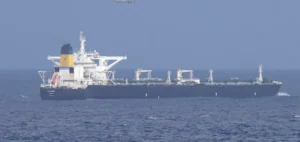The OPEC+ meeting, initially scheduled for December 1, has been postponed to December 5, reflecting growing tensions within the alliance. At stake: balancing the maintenance of production quotas with the need to respond to increasingly complex market conditions.
With Brent prices hovering between $70 and $75 per barrel—far below the ideal $80—the 22 members of the alliance face difficult decisions. Extending current cuts or implementing adjustments may be necessary to contain surpluses and counter weak global demand.
A saturated market and strategic divergences
Since 2022, OPEC+ has relied on a supply scarcity strategy, producing around 41 million barrels per day (b/d), compared to a real capacity of 47 million, according to Francis Perrin, Director of Research at the French Institute of International Relations (IFRI). However, this policy struggles to sustain prices effectively, particularly due to increasing volumes produced outside the cartel.
In the United States, where shale oil dominates, the competitive logic of private companies drives massive production. Consequently, the share of U.S. crude oil in global production has risen from 11% in 2016 to 16% in 2024. During the same period, the share of OPEC countries fell from 62% to 56%, according to the International Energy Agency (IEA).
This context fuels internal divisions within OPEC+. Some members, such as the United Arab Emirates and Kazakhstan, advocate for increased production to fund economic projects. In contrast, countries like Saudi Arabia and Russia favor caution to avoid another price collapse.
China and slowing demand
China’s economy, traditionally a key driver of global oil demand, is experiencing a slowdown marked by sluggish consumption and a major real estate crisis. This situation contributes to weak prices and limits short-term recovery prospects.
Oil demand growth forecasts reflect this uncertainty. While OPEC predicts an increase of 1.82 million b/d in 2024, the IEA is more conservative, estimating just 920,000 b/d.
Challenges for OPEC+ and the rise of alternatives
The rise of non-OPEC producers, particularly in the U.S., undermines the alliance’s efforts to stabilize the market. The pro-fossil fuel stance of President-elect Donald Trump reinforces this dynamic, with a clear intention to boost domestic production.
In these conditions, OPEC+ seeks to balance its strategy between maintaining cuts to support prices and avoiding further market share losses. However, as Jorge Leon of Rystad Energy points out, this approach is not sustainable in the long term. The gradual erosion of oil rents jeopardizes the economic modernization of several cartel members.
To counter these challenges, OPEC+ has started sending signals to U.S. shale producers, suggesting it could reopen the taps at any time. This threat aims to limit investments in new projects, as analysts anticipate WTI and Brent prices to hover around $60 in 2025.






















